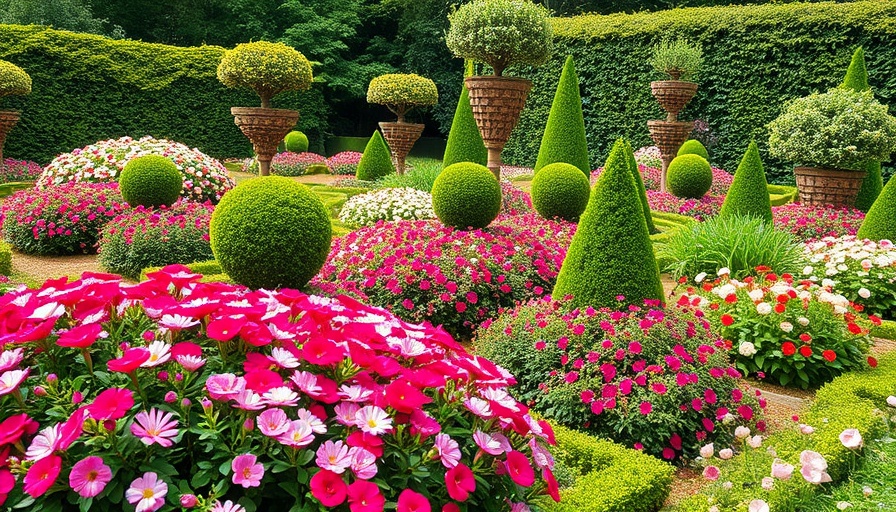
Understanding Mass Planting: A Guide to Garden Beauty
Mass planting is more than just placing flowers in the ground; it's a method of creating vibrant landscapes that burst with color and depth. Ideal for those looking to make an impact in their gardens, mass planting involves clustering flowers closely together, thereby creating a stunning display that not only draws the eye but also minimizes weeds and reduces maintenance. This technique allows for the creation of lush areas that can serve various aesthetic purposes, whether it be to border a pathway or fill empty spaces in your garden.
Choosing the Right Flowers for Maximum Impact
When embarking on your journey into mass planting, the endless selection of flowers can be overwhelming. However, key characteristics can guide your choices towards creating a stunning visual appeal. Seasonal colors, blooming patterns, and flower characteristics, such as height and texture, should all factor into your decision-making process. Here are some of the best flowers to consider for effective mass planting:
- Astilbe: This perennial offers feathery plumes that come in shades of pink, red, and white, attracting pollinators and adding a soft texture.
- Black-Eyed Susans: Bright yellow flowers with dark centers are resilient, making them perfect for mass planting in sunny areas.
- Marigolds: Known for their bright orange and yellow hues, marigolds are not only beautiful but also great for pest control in your garden.
- Tulips: These bulbs provide spectacular spring blooms—group them for a dramatic effect that heralds the arrival of warmer weather.
- Zinnias: With their bold colors and long-lasting blooms, zinnias can transform any garden spot into a lively focal point.
Planting Techniques and Considerations
Beyond choosing flowers, mass planting requires thoughtful spacing and organization. When planting, consider the mature size of the flowers to avoid overcrowding, which can lead to poor air circulation and health issues in your plants. Group like-flowering plants together to create blocks of color. This not only supports a cohesive design but also enhances the garden's visual narrative. Regular maintenance, such as watering and deadheading, will also help keep your mass plantings in peak condition throughout the growing season.
Seasonal Splendor: Timing Your Planting
One of the unique advantages of mass planting is the ability to plan for seasonal interest. By selecting flowers that bloom at different times of the year, you can ensure that your garden remains vibrant throughout the changing seasons. For instance, pair early bloomers like daffodils with late-blooming daylilies to extend color in your garden. Additionally, consider adding foliage plants among your flowering ones for texture and year-round appeal.
Making the Most of Your Garden Space
Whether your garden is expansive or limited in size, mass planting can adapt to various environments. For instance, in smaller spaces such as raised beds, a combination of perennials like phlox and annuals like petunias can create a rich tapestry of color without overcrowding. Conversely, in larger areas, create sweeping installations with multiple flower types that transition from one color to another, helping to guide the gaze across the landscape.
Embracing Organic Practices for Sustainable Gardening
Selecting organic gardening practices while mass planting can enhance both the health of your flowers and the surrounding environment. Using organic fertilizers and pest control strategies ensures that your plantings thrive while encouraging biodiversity. Consider incorporating companion planting techniques to further boost pollinator activity, benefiting both your garden's health and local wildlife.
Discover Your Next Gardening Project
Mass planting can rejuvenate any landscape while offering you a chance to express your creativity through gardening. By utilizing colorful and complementary flowers, you can create diverse and inviting spaces in your outdoor settings. Don't hesitate to experiment with different styles and arrangements as you find what speaks to you in your personal garden paradise.
 Add Row
Add Row  Add
Add 




Write A Comment